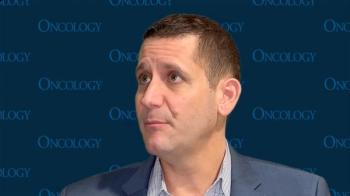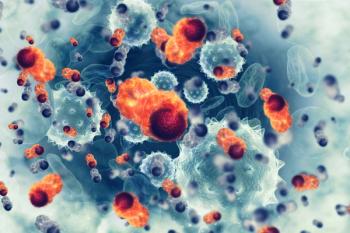
FDG and NaF PET/CT Predictive for Overall Survival in Genitourinary Malignancies
At 2022 ASCO GU, early trial results show promise for fluorodeoxyglucose and sodium fluoride PET/CT prognostic ability to predict survival in patients with metastatic genitourinary malignancies treated with cabozantinib plus PD-1/CTLA-3 inhibition.
Data presented at the
These parameters along with the percent change in number of lesions were determined to be prognostic in patients who were treated with the combination of cabozantinib (Cabometyx) plus nivolumab (Opdivo) with or without ipilimumab (Yervoy) according to findings in a phase 1 study. FDG PET/CT was risk stratified based on high vs low semi-quantitative parameters, whereas NaF PET/CT functioned best by risk stratifying according to the presence or absence of lesions.1
FDG PET/CT scanning parameters were metabolic volume tumor volume (MTV), total lesion glycolysis (TLG), hottest maximum standardized uptake value (SUVmax), and number of lesions. NaF PET/CT scanning parameters were fluoride uptake tumor volume (FTV), total lesion fluoride uptake (TLF), and number of lesions.
In 81 patients studied, investigators analyzed 957 FDG PET/CT and 414 NaF PET/CT lesions.
The most significant association with OS was found with the baseline MTV parameter (HR = 2.87, 95% CI, 1.62-5.08; P = .0003) and The FDG lesion number percent change (HR = 2.71; 95% CI, 1.40-5.24, P = .0031).
Investigators observed that MTV, with a baseline of 54 or less, had a median OS (mOS) of 31 months. A baseline greater than 54 had a median OS of 11 months (P = .0002). A TLG baseline of lower than 216 had an mOS of 30 months vs 11 months with a TLG of 216 or more (P = .0004). Patients with the hottest SUVmax less than 10.5 had an mOS of 25 months vs 12 months for those whose hottest SUVmax was 10.5 or greater (P = .025). Patients with fewer than 3 lesions had an mOS of 79 months compared with 15 months in patients with 3 or more lesions (P = .0005). Patients whose FDG PET percent change lesion number was decreasing had an mOS of 24 months vs 17 months for patients with stable lesion numbers. In patients whose FDG percent change lesion number was increasing, the mOS was 12 months (P = .021).
NaF PET/CT saws the most significant OS association in the number of lesions. Those without lesions had an mOS of 26 months vs 16 months in patients with 1 or more lesions (P = .007). The TLF in patients who were 0, between 1 and 130, and greater than 130 had an mOS of 26 vs 18 vs 14 months, respectively (P = .026). The FTV in patients who were 0, between 0 and 40, and greater than 40 had an mOS of 26 vs 20 vs 12 months, respectively (P = .016).
All 81 patients had a baseline FDG PET scan, and 78 had a baseline NaF PET scan. Patients received an 8-week FDG PET/CT and NaF PET/CT imaging follow up.
The majority of patients were male (83%). Forty-eight patients (59%) received the doublet combination and 33 patients (41%) received the triplet combination. The most common cancers found were urothelial (37%), renal clear cell (19%), and germ cell tumor (11%). Investigators assessed that the distribution of lesions found was 43% lymph nodal (n = 411), 26% lung (n = 252), 16% bone (n = 152), 9% liver (n = 87), and 6% other visceral metastases (n = 55).
The investigators suggest examining circulating biomarkers and imaging parameters to better predict patient outcomes in patients with mGU malignancies.
Reference
Simon N, Lei K, Verdini NP, et al. The association of FDG PET/CT and NaF PET/CT with survival outcomes in patients (pts) with metastatic genitourinary malignancies (mGU) treated with cabozantinib + nivolumab +/- ipilimumab (CaboNivo +/- Ipi). J Clin Oncol. 2022;40(suppl 6):452. doi: 10.1200/JCO.2022.40.6_suppl.452
Newsletter
Stay up to date on recent advances in the multidisciplinary approach to cancer.
















































































